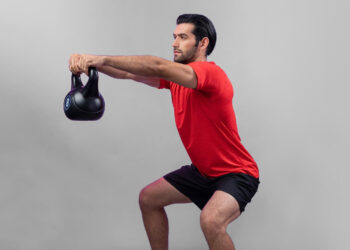The average person weighing 160 pounds burns 419-1067 calories per hour skating , the total calories burned depends on the your weight and the intensity of your Skating activity.
Calories Burned with Outdoor Activities (weight: 175 lbs)
| MET | 15 mins. | 30 mins. | 45 mins. | 60 mins. | |
|---|---|---|---|---|---|
| Cycling or Biking | 9 | 188 | 375 | 563 | 750 |
| Hiking | 4.8 | 100 | 200 | 300 | 400 |
| Fishing | 3.5 | 73 | 146 | 219 | 292 |
| Horseback Riding | 5.5 | 115 | 229 | 344 | 458 |
| Kayaking | 5 | 104 | 208 | 313 | 417 |
| Skating | 9 | 188 | 375 | 563 | 750 |
| Skateboarding | 5 | 104 | 208 | 313 | 417 |
| Golf | 4.8 | 100 | 200 | 300 | 400 |
| Jogging | 9.8 | 204 | 408 | 613 | 817 |
| Rock Climbing | 8 | 167 | 333 | 500 | 667 |
While there are plenty of types of different skating that you can do, nearly all of them are great workouts and can help you burn a significant amount of calories. Read on to find out exactly how many calories you can burn while doing various types of skating.
Skating is a general term that is loosely described as the action or activity of gliding on ice or a hard surface with specially designed footwear called skates. Since you can do many different types of skating on many different surfaces, it’s important to understand which types of skating can burn the most amount of calories.
There are skating activities that can be done for fun with friends and then there are activities that are played professionally in events like the X Games and the Olympics. Ice skating is a very popular type of skating that encompasses specific events in figure skating, speed skating, and tour skating, among others.
Skating on hard surfaces involves activities like roller skating, inline skating, road skating, and even skateboarding. No matter which skating activity you do, you will use many different muscle groups and be able to burn plenty of calories.
How To Use The Calculator
Using the calculator to determine how many calories you’ll burn while doing various types of skating activities is easy and only requires a few steps. To calculate the number of calories that you’ll burn, just input your weight and the time that you’ve spent or plan to spend skating. Then select the type of skating activity you’re doing and hit CALCULATE.
Level Up Your Fitness: Join our 💪 strong community in Fitness Volt Newsletter. Get daily inspiration, expert-backed workouts, nutrition tips, the latest in strength sports, and the support you need to reach your goals. Subscribe for free!
- Choose your unit of measurement (pounds or kilograms)
- Enter your weight in the corresponding unit of measurement
- Find the specific activity of skating that you are participating in
- Enter the time (total minutes) that you’re skating for
- Hit “CALCULATE”
How the Calculator Works
Our calculator uses MET values to give you an accurate estimate of how many calories you can expect to burn while skating and doing other activities. The higher the MET value, the more calories you will burn. There are some skating activities that have very high MET values which means you can burn a lot of calories.
MET (Metabolic Equivalent of Task)
The MET value stands for metabolic equivalent, and MET values allow us to give you an estimated expenditure of energy for many different activities, such as doing different types of skating.
A MET value is a ratio between the working metabolic rate and the resting metabolic rate [1], which is the rate of energy that is used relative to the duration of time spent doing activities like skating.
So a MET value of 1 is the equivalent of the amount of energy you expend while at rest, and a MET value of 9 means you are expending 9 times as much energy compared to being at rest.
Almost all activities that you can think of have MET values assigned to them. Some activities with MET values are common, and some are not so common. For example, there are MET values assigned to activities like video games, standing, spinning, and mowing the lawn..
Most activities come with varying levels of intensity and have different MET values assigned to them. For instance, there are many different types of skating you can do and they all have different MET values assigned to them.
Formula
The formula that our Skating Calculator uses to determine the number of calories burned per minute is (MET x bodyweight in Kg x 3.5) ÷ 200.
Examples
A person weighing 160 pounds will burn approximately 420 calories per hour from ice skating at 9 miles per hour or less. This activity has a MET of 5.5, which means that it burns over 5 times as many calories as you would at rest.
This is what the formula for calculating the calories burned while ice skating at 9 mph or less will look like for a 160-pound individual at a MET value of 5.5.
- Calories burned (per minute) = (body weight in kg x MET x 5) ÷ 200
- Calories burned (per minute) = ( 72.6 x 5 x 3.5 ) ÷ 200
- Calories burned (per minute) = 7 calories x 60
- Calories burned (per hour) = 420 calories per hour
A popular event at the Olympics is called speed skating, which is a competition between skaters that race each other on ice around a closed track. This type of skating is done via long track, short track, or marathon speed skating.
This is what the formula for calculating the calories burned while speed skating at a competitive level will look like for a 160-pound individual at a MET value of 13.3.
- Calories burned (per minute) = (body weight in kg x MET x 5) ÷ 200
- Calories burned (per minute) = ( 72.6 x 3 x 3.5 ) ÷ 200
- Calories burned (per minute) = 9 calories x 60
- Calories burned (per hour) = 1,014 calories per hour
How many calories are burned while Skating for one hour? (weighing 160 pounds)
| # | Activity Name | Met | Time Spend | Calories Burned |
|---|---|---|---|---|
| 1 | Skating, ice, rapidly, more than 9 mph, not competitive | 7 | 60 Min | 533 Cal |
| 2 | Skating, ice dancing | 14 | 60 Min | 1067 Cal |
| 3 | Skating, ice, 9 mph or less | 5.5 | 60 Min | 419 Cal |
| 4 | Skating, ice, general | 9 | 60 Min | 686 Cal |
| 5 | Skating, speed, competitive | 13.3 | 60 Min | 1013 Cal |
Level Up Your Fitness: Join our 💪 strong community in Fitness Volt Newsletter. Get daily inspiration, expert-backed workouts, nutrition tips, the latest in strength sports, and the support you need to reach your goals. Subscribe for free!
What is Skating?
As we mentioned before, skating is a diverse sport that can be played by anyone of any age at any skill level. Ice skating rinks and skate parks are becoming more and more popular for recreational skating activities, and many beach towns cater to skaters with nice pathways that they can easily skate on.
Roller skating (or rollerblading) is the most common recreational activity and is especially popular among teenagers and young children. Roller skating can also be done by hockey players that play the sport on a blacktop.

Ice skating is a worldwide sport and there are plenty of different ice skating events that professionals can compete in. Figure skating is one of the most difficult skating activities and involves the athletes skating on ice and doing various figurative movements and spins in the air.
Since skating involves a combination of speed, balance, and strength, it’s important to use precaution when doing any type of skating activity, as it can be very easy to become injured if you make the wrong move or time your jumps inaccurately.
What Muscles Does Skating Work?
All types of skating involve many different muscle groups to be successful and to compete at the highest levels of the sport. Skating will primarily involve the muscles of your lower body since all skating activities make great use of your hips and legs in order to generate power and speed while skating.
However, skating isn’t just a lower body workout. The major muscle groups that you use while doing any type of skating include:
You might be surprised to find out that skating uses your core muscles very frequently. The reason for this is that you need to maintain your balance while doing all types of skating. Having a strong core is also important for figure skaters to do the various jumping and spins that are required.
Benefits of Skating
Since skating burns so many calories for any activity that you do involve skates, you will get all the benefits that burning calories comes with. Some of these benefits include increased weight loss, reduced body fat, lower BMI, and reduced risk of many chronic diseases like high blood pressure and diabetes [2][3].
Skating is a great way to also build strength in your lower body. Doing skating activities and practicing frequently will tone your legs and most muscles in your lower body.
Other benefits from skating include increasing your core strength and also your muscular endurance. Skating is a cardio workout and will also allow you to go for longer periods of time in other activities like running and sprinting.
Equipment
As you can imagine, skating does require a fair amount of equipment to compete at any level as well as just recreationally with friends and family. Many people go to skating centers or ice rinks and rent their skates from the place of business instead of buying their own skates.
The most common equipment that skaters of any level use include:
- Ice skates
- Roller skates
- Elbow pads
- Gloves
- Knee pads
- Hip pads
- Appropriate socks
- Skating bag
Skating equipment is easy to find, as many different types of sporting goods stores will carry all the equipment that you’ll need to get started with skating.
Frequently Asked Questions:
Is skating hard to do?
Depending on which skating activity you are performing, it can use a significant amount of energy. All types of ice skating, figure skating, and speed skating are done at competitive levels and a significant amount of training is required to compete in these sports. Skating also requires a great deal of balance in order to keep your balance while skating at high speeds
Is skating good for weight loss?
Since you can burn a lot of calories regardless of the type of skating that you are doing, skating can be especially good for losing weight. All skating activities use many different muscle groups, so the longer that you can skate means the more weight you can lose.
Is skating better than running?
Depending on the type of skating you’re doing, your body composition, and the duration of skating, any type of skating can in fact be better than running. If you run at a slow pace or can’t run for very long, skating could be a great activity since it’s a relatively low-impact exercise that is able to be done for long periods of time.
Does biking or skating burn more calories?
Biking for long distances or uphill can burn plenty of calories, as it can be a very intense exercise that uses a lot of energy. However, activities like speed skating and figure skating also burn many calories that could be more than biking, depending on factors like the type of cycling you are doing and the intensity of the cycling activity.
Is it healthy to stand all day?
If you can stand all day without experiencing any negative effects like stress on your joints or back, standing all day can be a great way to burn some extra calories. If you start to feel some discomfort from standing so much, you should take breaks before you start standing again.
The Bottom Line
Doing any type of skating activity will allow you to burn lots of calories. Whether you want to start ice skating for fun, figure skating, speed skating, or any other type of skating, be sure to use plenty of caution as skating can be a dangerous sport when doing it at high speeds.
Skating is also a great activity to do if you want to lose weight. As long as you remain in a caloric deficit throughout the day, adding skating into your daily life can help you lose weight and body fat in the process.
All types of skating also use many different muscle groups, mainly in your lower body, core, and lower back. If you want to skate at the highest levels of competition, you will need to make sure that you have developed these muscles by doing plenty of strength training and cardio when you aren’t skating.
Use our skating calculator to get an idea of how many calories you can expect to burn while doing various types of skating, and be sure to check out all the other calculators that we have to offer at Fitness Volt!
References:
- Jetté, M., Sidney, K., & Blümchen, G. (1990). Metabolic equivalents (METS) in exercise testing, exercise prescription, and evaluation of functional capacity. Clinical cardiology, 13(8), 555–565. https://doi.org/10.1002/clc.4960130809
- Beckerman, J. (n.d.). High blood pressure levels: Effects of weight, salt, alcohol, and more. WebMD. Retrieved March 13, 2022, from https://www.webmd.com/heart-disease/guide/heart-disease-prevent#091e9c5e80010ab8-1-2
- Carbone, S., Del Buono, M. G., Ozemek, C., & Lavie, C. J. (2019). Obesity, risk of diabetes and role of physical activity, exercise training and cardiorespiratory fitness. Progress in cardiovascular diseases, 62(4), 327–333. https://doi.org/10.1016/j.pcad.2019.08.004

















